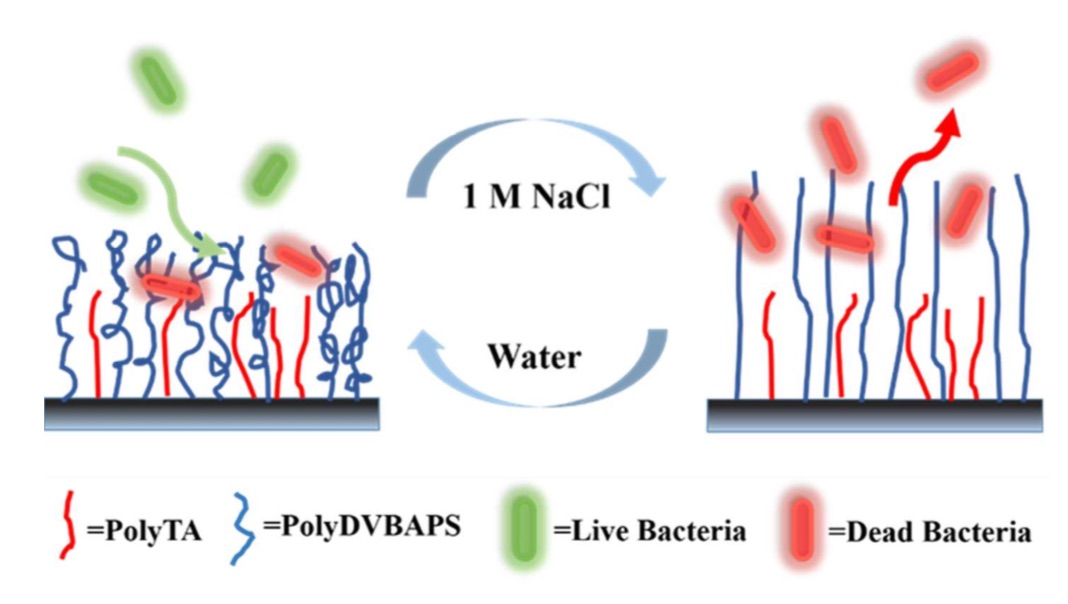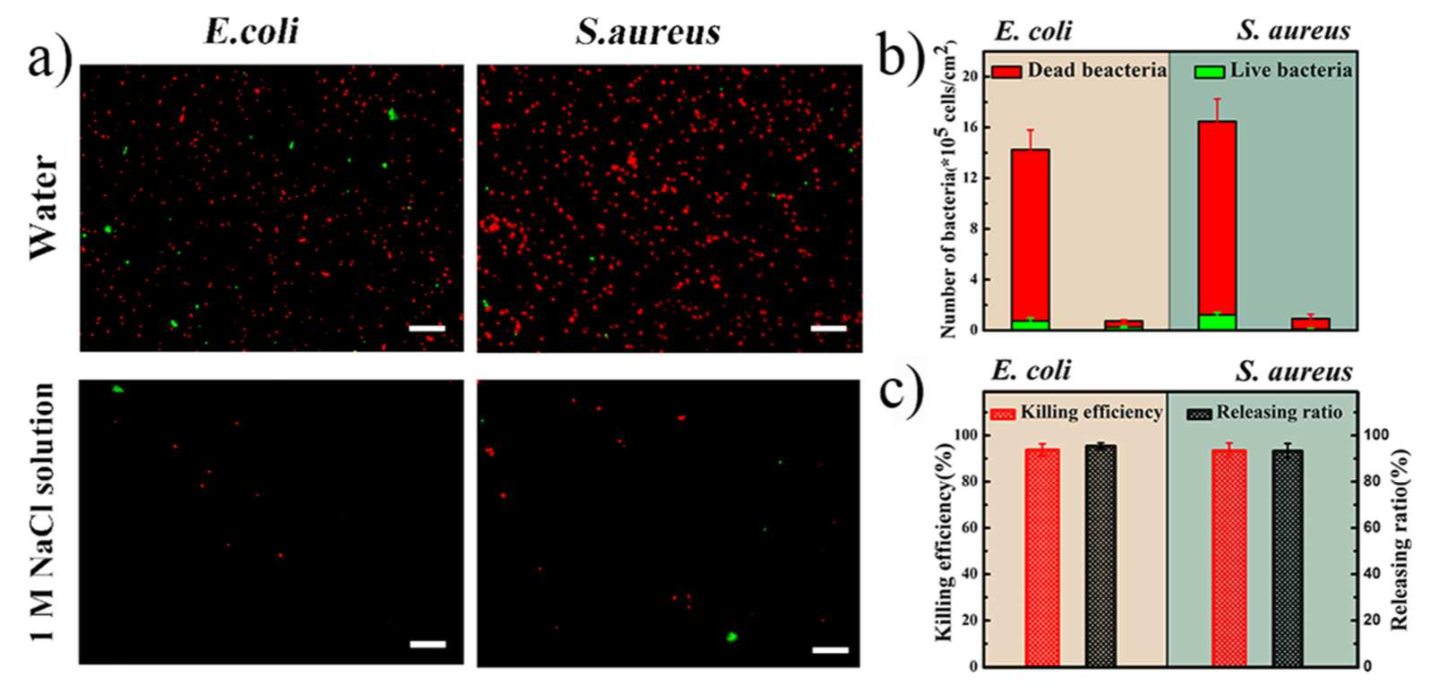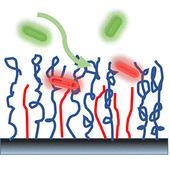Antibacterial surfaces are one way that we are fighting back against antibiotic-resistant bacteria. Killing bacteria before they infect our bodies obviously precludes the need for an antibiotic.
In one type of antibacterial surface -- naturally found on dragonfly wings -- tiny pillars physically rip bacteria apart. Other surfaces employ silver nanoparticles. As effective as these surfaces can be, the trouble is that dead microbes build up over time, decreasing their efficacy. Ideally, therefore, antibacterial surfaces should be self-cleaning. A team of researchers in China describes one such surface that they developed.
The scientists began with silicon wafers, onto which they added polymers (long molecules with repeating units). The first polymer, made from 2-(tert-Butylamino)ethyl methacrylate and dubbed "polyTA," has antibacterial activity. The second polymer, made from an even more tongue-twisting compound and called "polyDVBAPS," constituted the self-cleaning component. Crucially, this polymer changes shape in the presence of salt.
The idea is that a surface containing both polymers would work as follows: (1) polyTA kills bacteria; (2) The surface is washed with a salt solution; (3) polyDVBAPS changes shape due to the salt solution, ejecting the dead bacteria from the surface; and (4) The original shape of the polymer is restored by rinsing with water. The figure below depicts this process:

Indeed, the authors' "kill and release" antibacterial surface worked very well. When they added E. coli and Staphylococcus, the surface killed roughly 95% of both. Similarly, after being washed with a salt solution, the surface ejected about 95% of the bacteria. (See figure; green bacteria are living, and red bacteria are dead.)

Importantly, after going through four kill-and-release cycles, the surface was still able to kill more than 90% of the bacteria, demonstrating that it was reusable. A fine innovation, indeed.
Source: Yanhong Fu et al. "Salt-responsive 'Killing and Release' Antibacterial Surfaces of Mixed Polymer Brushes." Ind. Eng. Chem. Res. 57 (27): 8938-8945. Published: 15-June-2018. DOI: 10.1021/acs.iecr.8b01730




